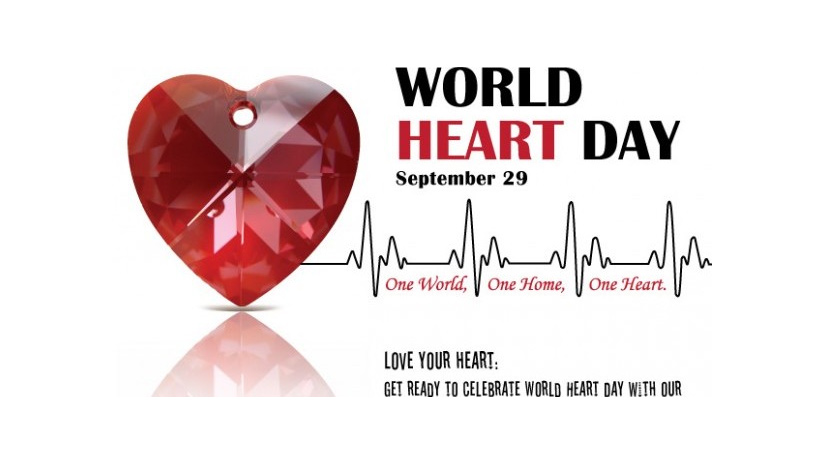September 29 is World Heart Day which is an initiative of a World Heart Federation to increase awareness and prevention of cardiovascular diseases. We must have learnt “Structure of Heart” while in school and are aware that size of heart is no bigger than size of fist and is highly muscular and located slightly left towards the left lung and breast bone. It pumps oxygenated blood to all parts of the body and deoxygenated blood to the lung for oxygenation.
We do know that heart has 4 chambers, 2 on left and 2 on right. Auricles are the upper chambers while Ventricles are the lower chambers. The chambers are as follows:
The right auricle/atrium receives blood from the veins and pumps it to the right ventricle.
The right ventricle receives blood from the right auricle and pumps it to the lungs for oxygenation and detoxification
The left auricle/atrium receives oxygenated blood from the lungs and pumps it to the left ventricle.
The left ventricle (the strongest chamber) pumps oxygen-rich blood to the rest of the body. The left ventricle’s dynamic contractions are the ones that create our blood pressure.
Vocabulary you have to know about!
Blood Pressure:

Blood pressure is measured in mmHg. It’s a ratio of systolic and diastolic pressures. The normal BP of any person should be 120/80 mmHg on an average.
Systolic Pressure:
The numerator, which is also the higher of the two numbers, measures the pressure in the arteries when the heart beats (First contraction of the heart muscle).
Diastolic Pressure:
The denominator, which is also the lower of the two numbers, measures the pressure in the arteries between heartbeats (when the heart muscle is resting between beats and refilling with blood; just after second contraction).
While BP can change from minute to minute due to changes in posture, exercise, stress or sleep. A single high BP reading does not mean that you have a high blood pressure. However, if readings stay at 140/90 mm Hg or above for an extended period of time then you need to consult a doctor.
If, while monitoring your blood pressure, you get a systolic reading of 180 mm Hg or higher OR a diastolic reading of 110 mm HG or higher, wait a couple of minutes, relax measure it again. If the reading is still at that level, seek an immediate emergency medical treatment for a hypertensive crisis.
Heart problems related vocabulary.
Coronary artery disease:
Over the years, cholesterol plaques can narrow the arteries supplying blood to the heart. The narrowed arteries are at higher risk for complete blockage from a sudden blood clot (this blockage is called a heart attack).
Arrhythmia (dysrhythmia):
An abnormal heart rhythm due to changes in the conduction of electrical impulses through the heart. Some arrhythmias are benign, but others are life-threatening.
Congestive heart failure:
The heart is either too weak or too stiff to effectively pump blood through the body. Shortness of breath and leg swelling are common symptoms.
Cardiomyopathy:
A disease of heart muscle in which the heart is abnormally enlarged, thickened, and/or stiffened. As a result, the heart’s ability to pump blood is weakened.
Pulmonary embolism:
Typically a blood clot travels through the heart to the lungs.
Cardiac arrest:
Sudden loss of heart function.
By: Archa Dave






























